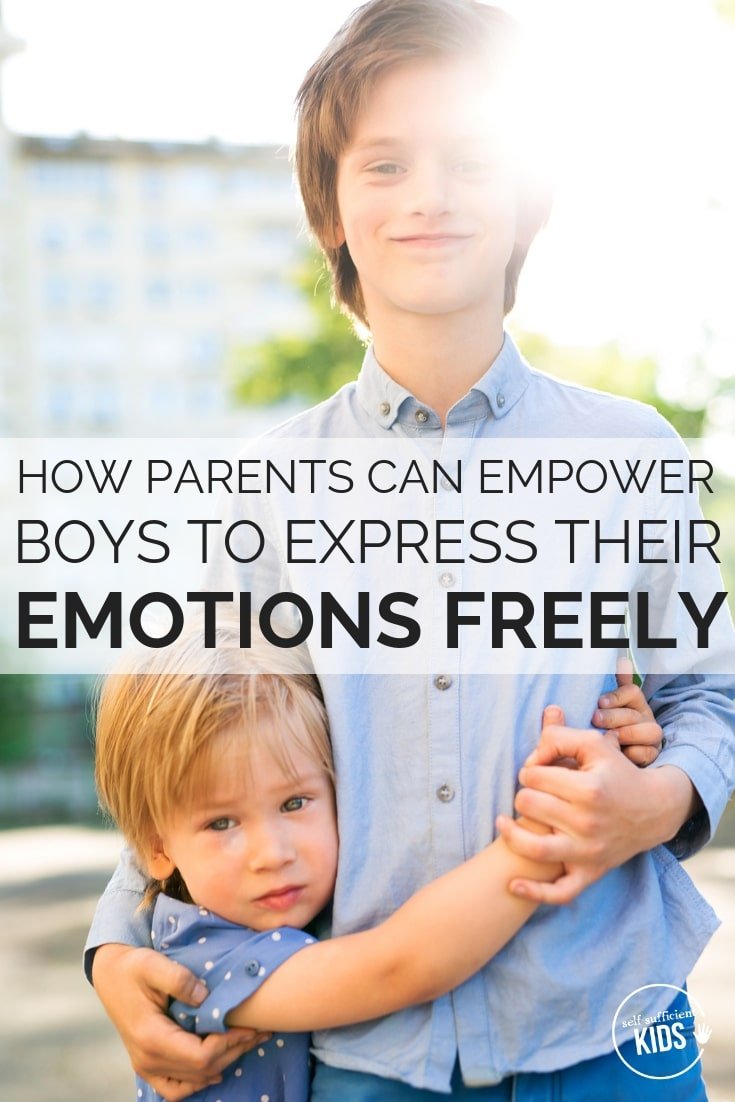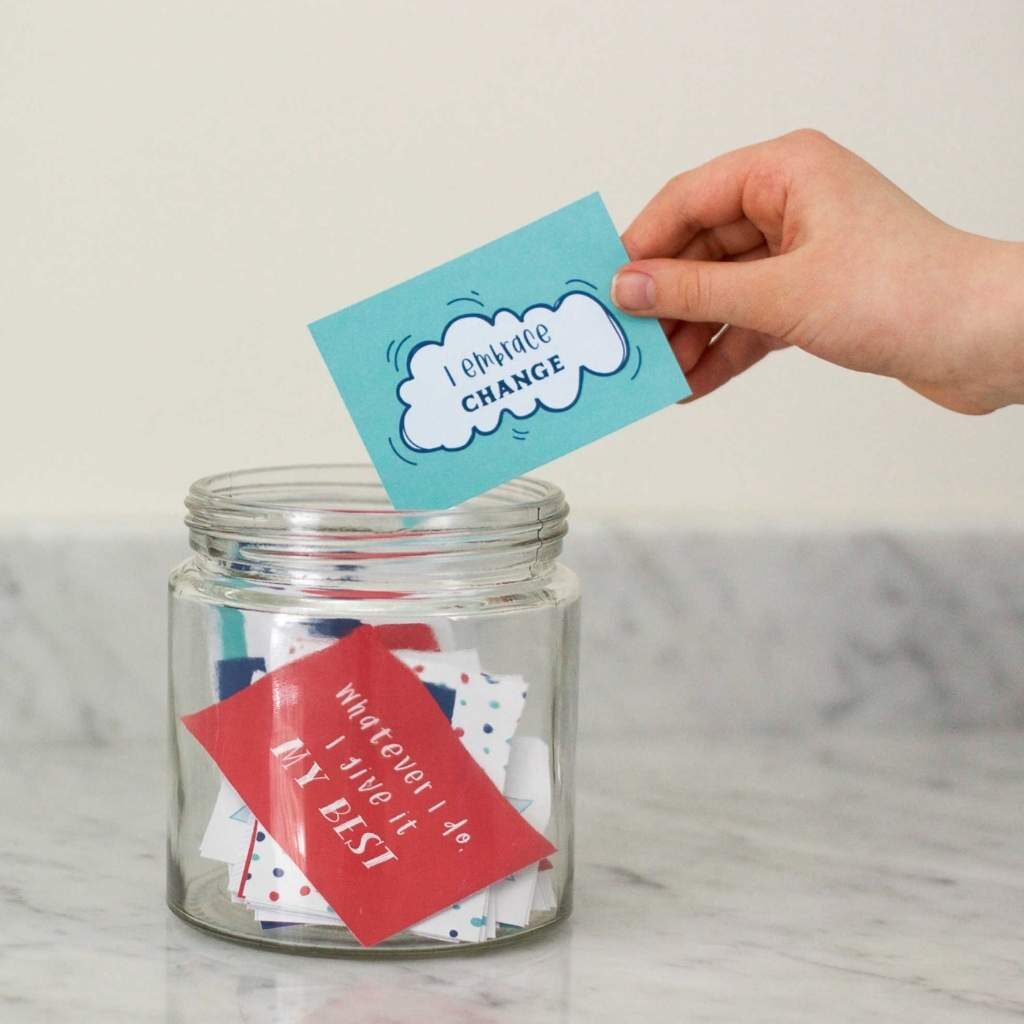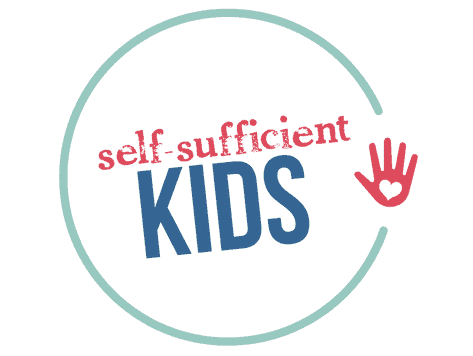How to Empower Boys to Express Their Emotions Freely
After a tragic event left her family devastated and emotionally handicapped, a mother shares how she’s raising boys to express their emotions freely.

(This post contains affiliate links. If you click on a link and purchase the item, I will receive a commission at no extra cost to you.)
I am a mom of boys – three boys.
This means my house is filled with dirt, smells, and loud, raucous noise. All of my sons are “rough and tumble”. They love cars, trucks, motorized vehicles and superheroes.
They wrestle, burp, fart and make me feel like I live in a zoo. I wouldn’t want it any other way.
Raising boys was a bit of a shock to the system. Boys are definitely more physical but they’re also very sensitive beings. As a young girl, it was always acceptable to show my sensitivity and my tougher side. As young males, boys are often encouraged to only show their more stoic side. When they display their sensitive side or softer emotions, society tends to send the message that they need to toughen up.
Growing up it was just my sister and me. Our emotions ran freely. Tears were no stranger in our home. Displaying emotions at all ages and in all places was acceptable.
Now that I’m raising boys, the division between what boys feel and what is socially acceptable for them to emote is evident. This became extremely evident in my home when we lost my oldest son, Christian, four years ago in a tragic accident. My husband, two boys, and I were in an emotional coma.
It became a necessity to teach my boys how to express and productively deal with their emotions.
When Christian passed away my two living sons were three and one year old.
My one-year-old, Nicky, had no true understanding of what had occurred. Anthony, my three-year-old, was very aware of what happened. He knew his older brother, his buddy, his hero, was gone. He was confused about to why his big brother wasn’t there for his first day of school, for his fourth birthday and for Halloween.
Immediately, my motherly instincts about how to raise my children in a world without their older brother told me to always be emotionally open, truthful in a developmentally appropriate manner, and to never make my boys feel as though they were unable to speak about their brother.
One of the very first things I read about child loss has stuck with me and always will. The impact it made on me cemented my instincts to allow my boys to see my own emotions. It was an excerpt about a little girl who lost her sister. This girl said she never saw her mother cry.
One day the little girl got hurt and the mom was very concerned. The little girl turned to her mom and said: “Why are you so upset? My sister died and you never even cried about her not being here anymore.”
The mother thought that by shielding her daughter from her pain she was making the best possible decision. In actuality, she was sending a message to her daughter that neither she nor her sister were important enough to get upset over.
Emotional expression, emotional availability, and connection are extremely important in a family, especially when raising boys.
When faced with trauma and tremendous loss at such as young age, large emotions were bound to surface in my boys and they have. Through open doors of communication and modeling how to handle my own emotional ups and downs, I have been able to help my children process their feelings.
Meg Meeker writes in her book, Strong Mothers, Strong, Sons: “When a mother helps her son feel comfortable with his feelings, she can help him talk those feelings out. Remember, when they stay stuck inside the boy’s heart, they gain power. By diffusing that power through talk, she can help him find that yes, he is capable of helping others and making a difference in their lives. He is able to do for himself what needs to be done so that he can overcome obstacles in his future.”
Both of my boys have experienced sadness, confusion, anxiety, sleeplessness, nightmares, and anger. Some of this is likely normal developmental behaviors. Some of it, however, is due to the trauma they have lived through.
As a mother raising boys, my job is to help them learn how to become emotionally independent. Meeker says, “We must help our sons grow up in an environment where feelings take their proper place. If done well, this can be one of the most significant gifts we give our sons to ensure sound psychological health.”

The most effective way for children to learn is to be lead by example.
There were many times throughout the first year after losing Christian when I would burst into tears. Often this would happen when my two children and I were in the car.
At ages four and two they would want to know why Mommy was crying. I was honest with them. I told them that I missed their older brother. Sometimes I would go as far as to tell them that I heard a song that reminded me of him or saw something that reminded me of him. Often this would lead to a conversation about how my four year old was also missing him.
My boys still see my tears of sadness being shed. At other times they see my smiles of joy. Through example, I continue to strive to model for them that sadness and joy can exist together.
Talking about my emotions with my boys allows them to feel comfortable doing the same with me. It also normalizes the sadness they feel. Just this week my seven-year-old asked why God would allow such a thing to happen to Christian. I shared with him that I have these same thoughts. I also shared with him that I was angry at God for a long time.
We don’t always have time to think before our emotions make themselves known. But sometimes we do.
When things are frantic and a fit of frustration is on the brink of exploding from within me, I try to stop and take five breaths. This is an amazing calming technique. My goal is to make it more of a habit. When my children see me doing this, they are more likely to try to do the same. My five year old has actually noticed this and commented on it to me. If nothing else, he is now aware of the tools he can use to help him control his emotions in the heat of the moment.
Ready to do positive affirmations with your kids? These 101+ cards can help. Click here or the image below to learn more and get your own set.

Giving boys an emotional vocabulary, even at an early age, is a tremendous asset.
It teaches them from early on to pay attention and be in tune with their emotions.
Most of the time children are in tune with their emotions until they learn it’s not acceptable.
When Nicky, my youngest son, told me he felt “homesick” even though he was at home, we explored that feeling together. After asking him a few questions such as, Where in your body do you feel homesick? What does it feel like? and What do you think will help? We were able to determine that he was feeling anxious. Nicky was set to start camp that week and the uncertainty of a new experience was making him anxious.
Identifying, naming and talking about anxiety helped to normalize his feelings. It also allowed us to work together to find ways to help him feel better about his new experiences.
Meeker says: “It’s been my experience that by the time boys are in the fourth grade, they very well might believe they are never supposed to feel angry, sad, lonely, or grief-stricken.” If we can help boys to recognize and identify these feelings at a young age, we can help to change this perception.
Once children can identify their feelings, we need to help them work through their feelings.
Bedtime is a popular time for children to talk to parents about their day. My seven year old often feels anxious as his mind processes the day’s occurrences. One thing we have tried is guided meditation.
Donna B. Pincus, has an album titled, I Can Relax. There are eleven tracks in which she guides children in a soothing voice through calming activities. Our favorite, “Making Lemonade” uses the technique where children squeeze their hand as hard as they can, while they imagine squeezing a lemon. Then they relax. This is an effective method used to remove stress from the body.
Tools are not a one-size-fits-all, nor do they always work consistently. The idea is to give children the choice of what works best for them at the time. Eventually, children will learn how to apply these tools on their own to regulate and process emotions.
Here is a list of some tools we use in my home:
- Talking: We talk about our feelings. This usually works best when we are playing or getting ready for bed. Sometimes just listening and providing children with a sounding board can be the most valuable way to learn about their day and their emotions.
- Whole hand breathing: Hold up your left hand. Trace your left hand with your right pointer finger. As you trace up each finger breathe in. As you trace down each finger, breathe out. This will result in taking five deep breaths.
- Balloon breathe away: We close our eyes and visualize breathing all worries, concerns or fears into a balloon. We fill the balloon and watch it float away with our negative thoughts. If your child is having trouble visualizing this, use the balloon coloring sheet where he writes down his emotions and colors them away.
- Scream it out: This can be screaming into a pillow or doing a silent scream. A pillow also makes a great punching bag!
- Exercise: Sometimes exercise means practicing yoga poses, pushing a wall, doing jumping jacks or having a dance party. These yoga poses help us to relax before bed. Here are some of our favorite high impact exercises for when we need to process big, bold emotions.
Above all children must know that their home and parents are their safe place.
Meeker writes: “Be persistent with him but gentle and patient, remembering that often boys won’t respond until you have prodded several times, because they want to know if you genuinely want to listen and if you are going to take their feelings seriously.”
If boys are told to stop crying, toughen up or get over things, their feelings will be invalidated. They will learn that they need to keep their feelings in.
If we use a listening ear, allow our children time and space to vent, and create an emotionally honest environment, children will be emotionally stable. But boundaries do need to be set. Children need to know they are allowed to express any and every emotion, however, they are never allowed to hurt anyone with their hands. This is a great visual to remind kids of these boundaries.
The final goal is to ensure that all children, but boys especially, know that it’s okay to show emotion. It doesn’t make anyone weak or a baby. As parents, we want to help our children navigate the world. If we begin teaching our children tools when they’re young, these tools will be indispensable to them as they grow.

About the author: Cara Martinisi is a wife and mother to three boys. Her oldest son lives in heaven. She is a contributor to The Mighty and The Peace Journal. She writes an inspirational blog about her journey through grief. Cara shares her unique outlook on child loss at Christian’s Red Balloon.
You may also like:
What Kids Really Need to be Confident, Independent, and Self-Reliant
Why Every Kid Should Talk Back to Their Parents
Get Your Kids to Listen to You + Strengthen Your Bond With Them at the Same Time
